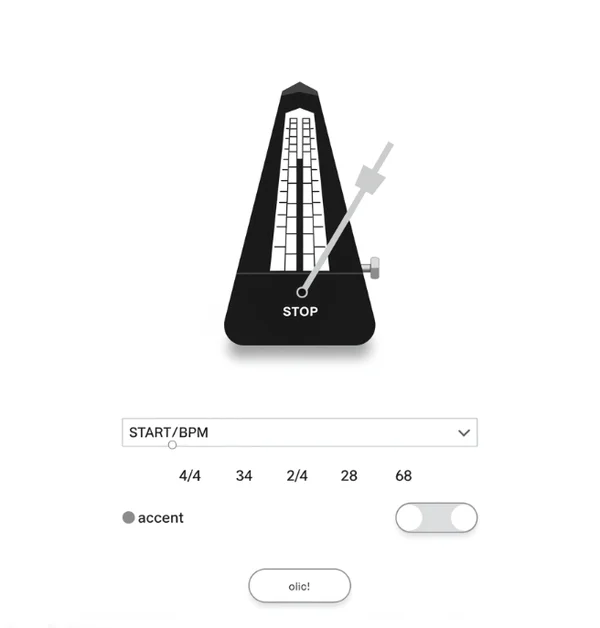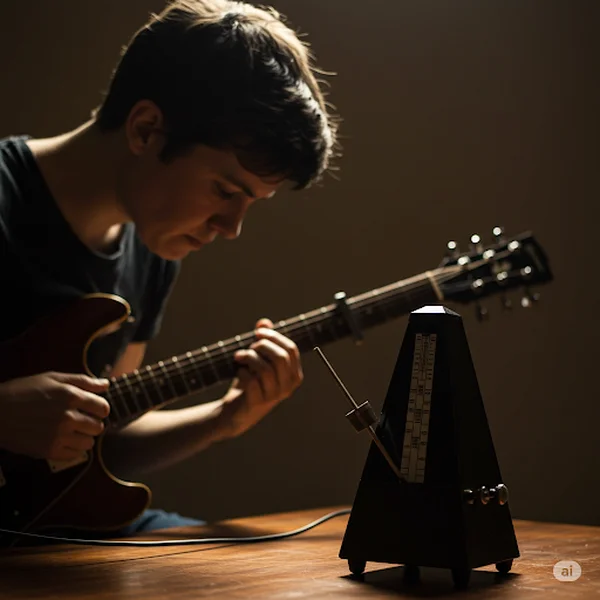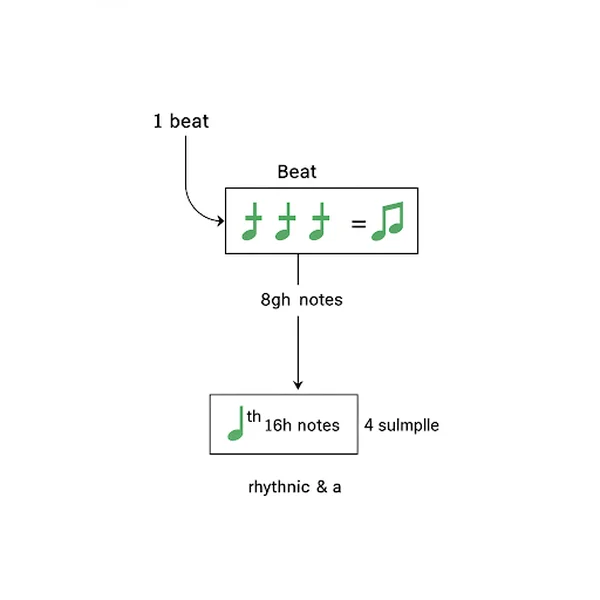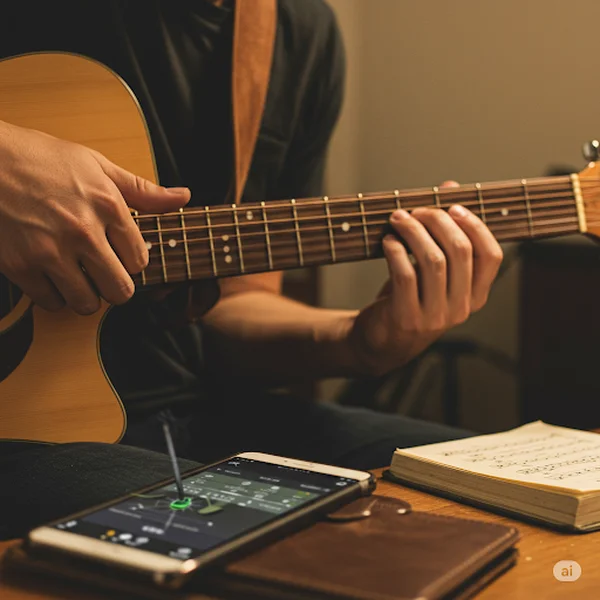5 Essential Metronome Exercises to Supercharge Your Rhythm
Are you ready to take your musical timing from good to great? Many musicians wonder how to practice with a metronome effectively to truly master their rhythm. The good news is that consistent, focused metronome practice can be your secret weapon. With a reliable online metronome like the one on our site, you have a powerful tool right at your fingertips. This guide will walk you through five essential rhythm exercises designed to supercharge your internal clock and elevate your playing, no matter your instrument. Try our free tool and follow along!
Setting Up Your Online Metronome for Success
Before diving into the exercises, what should I set my metronome to for optimal practice? First, ensure you're comfortable with the basic settings of your chosen metronome online. On our platform, you can easily adjust the Beats Per Minute (BPM), time signature, and accent.

Choosing the Right BPM for Metronome Exercises
When starting any new rhythm exercise, always begin at a slow tempo where you can play accurately and comfortably. Gradually increase the BPM as you master the exercise at slower speeds. Many musicians ask, "What is a good starting BPM for beginners?" Generally, something between 60-80 BPM is a good starting point for many of these metronome exercises.
Understanding Beats and Accents on Your Metronome
Familiarize yourself with how your free metronome indicates the downbeat (usually a different sound or a visual cue) and subsequent beats within a measure. This understanding is crucial for many music practice tips involving rhythmic precision.
The 5 Essential Metronome Exercises to Build Solid Rhythm
Now, let's explore five foundational metronome exercises that will help you improve rhythm and build a rock-solid sense of time. Remember, consistency is key!

Exercise 1: The Foundation - Mastering Steady Beat Practice
How can I improve my timing with a metronome? This is the most fundamental metronome practice. Set your web metronome to a comfortable tempo.
- How to Practice: Simply play or clap along to each click, focusing on perfect synchronization. Aim for each note or clap to land precisely with the metronome's beat. Listen intently for any rushing or dragging.
- Common Pitfalls: A common issue is either anticipating the beat or falling slightly behind. Focus on relaxing and letting the metronome guide you. This simple rhythm exercise builds your core timing.
Exercise 2: Scaling New Heights - Rhythmic Scale Practice with Your Metronome
Scales aren't just for finger dexterity; they are excellent for metronome practice. How do you practice scales with a metronome?
- Applying Metronome Practice to Major and Minor Scales: Start by playing one note per click (quarter notes). As you get comfortable, progress to two notes per click (eighth notes), then four notes per click (sixteenth notes). This helps with evenness and control at different subdivisions.
- Tips for Smooth Transitions Between Notes: Ensure each note in the scale receives its full rhythmic value before moving to the next. This is a key aspect of effective music practice tips.
Exercise 3: Syncopation Sensation - Conquering Off-Beat Rhythms
Syncopation, or playing on the off-beats, can be tricky but adds immense character to music. How do you practice syncopation with a metronome?
- Breaking Down Complex Rhythms with the Metronome: Start with simple syncopated patterns. For example, in 4/4 time, try clapping or playing on the "and" of each beat (1-AND-2-AND-3-AND-4-AND). Your no-cost metronome can help keep the main beats steady while you focus on the off-beats.
- Starting Slow: The Key to Syncopation Mastery: As with all rhythm exercises, slow and accurate practice is more beneficial than fast and sloppy.
Exercise 4: Subdivision Power - Playing with Eighth and Sixteenth Notes
Understanding and accurately playing subdivisions is crucial for rhythmic fluency. How do you practice subdivisions with a metronome?

- Setting Your Metronome for Different Subdivisions: While your main digital metronome might click on quarter notes, mentally (or by setting a subdivision feature if available) divide each beat into eighths or sixteenths. Practice playing patterns that utilize these smaller rhythmic units.
- Improving Articulation and Clarity: Focus on making each subdivided note clear and distinct. This metronome practice greatly enhances your rhythmic precision.
Exercise 5: The Silent Treatment - Internalizing the Beat
This advanced rhythm exercise tests your internalized sense of time. How do I get better at keeping time without a metronome?
- How to Practice with Muted Metronome Beats: Set your online practice tool to play for, say, two measures, and then be silent for two measures. Your goal is to continue playing in time during the silent measures and land perfectly when the metronome clicks back in.
- Developing Your Inner Clock: This exercise forces you to rely on your internal pulse, a vital skill for any musician looking to improve rhythm.
Pro Tips for Effective Metronome Practice Sessions
To get the most out of your metronome practice using tools like ours:

- Start Slow and Gradually Increase Tempo: This is a golden rule for all music practice tips.
- Consistency is Key: Short, Regular Practice: 15-20 minutes of focused metronome exercises daily is more effective than one long, infrequent session.
- Record Yourself: The Honest Feedback Tool: Often, you'll hear timing inaccuracies in a recording that you missed while playing.
- Don't Be Afraid to Vary Your Metronome Sounds: If your preferred online metronome offers different click sounds, experiment to find what helps you focus best.
Supercharge Your Rhythm with Consistent Metronome Practice
Mastering rhythm is a journey, and your web-based metronome is an indispensable companion. By consistently incorporating these five essential metronome exercises into your routine, you'll undoubtedly see a significant improvement in your timing, precision, and overall musicality. Remember to be patient, start slow, and celebrate your progress.
Your Metronome Practice Questions Answered
-
How long should I practice with a metronome each day?
For most musicians, 15-30 minutes of focused metronome practice daily can yield significant results. Consistency is more important than duration.
-
What's a good starting BPM for these rhythm exercises?
A good starting point for beginners is typically between 60-80 BPM. The key is to choose a tempo where you can play the rhythm exercises accurately and comfortably before gradually increasing speed. You can easily set this on our easy-to-use metronome.
-
Can these metronome exercises help with any instrument?
Absolutely! These fundamental metronome exercises are beneficial for musicians of all instruments, from guitar and piano to drums and vocals, as they focus on core rhythmic skills.
-
What if I find metronome practice boring?
Try varying the exercises, setting small achievable goals, or practicing along with a simple backing track that uses the metronome click. Remember the long-term benefits to improve rhythm, which can make even challenging metronome practice more motivating.